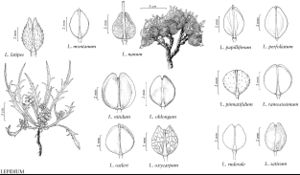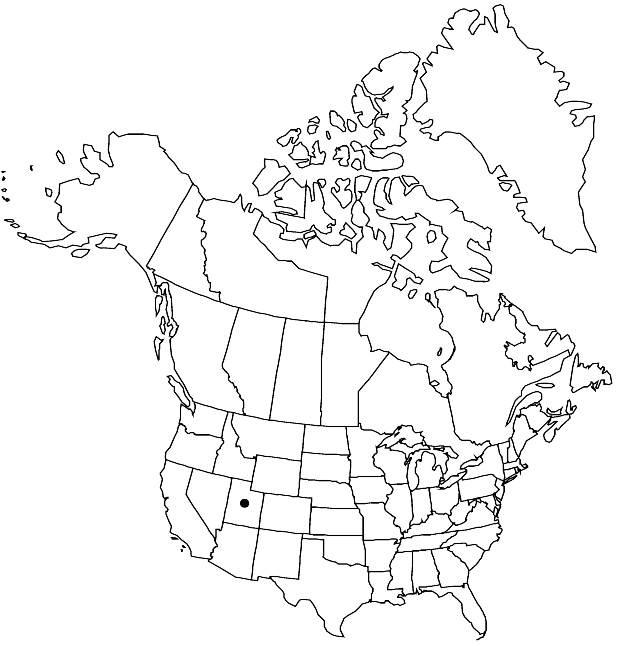Lepidium ostleri
Great Basin Naturalist 40: 80, fig. 3. 1980.
Perennials; (pulvinate, caudex woody, many-branched, covered with persistent petiolar remains); densely (grayish) puberulent. Stems simple from base (caudex branch), erect to ascending, unbranched distally, (0.1–) 0.3–0.8 dm. Basal leaves not rosulate; petiole often undifferentiated, (expanded base to 2 mm); blade (somewhat fleshy), linear to linear-oblanceolate (when margins entire), or spatulate in outline (when apically 3–5-lobed, lobes obovate to oblong), 3–12 (–15) cm × 5–15 mm, margins entire. Cauline leaves sessile; similar to basal, smaller, base not auriculate. Racemes slightly elongated in fruit; rachis puberulent, trichomes straight or curved, cylindrical. Fruiting pedicels divaricate-ascending to subhorizontal, straight or slightly curved, (not winged), (2.5–) 3–5 (–6.5) × 04–0.5 mm, densely puberulent throughout. Flowers: sepals orbicular to broadly obovate, 1.5–2 (–2.5) × 1–1.5 (–2) mm; petals white to pale-purple, suborbicular to obovate, 2–3.5 × 1.5–2.5 (–2.8) mm, claw to 0.5 mm; stamens 6; filaments 1.5–1.8 mm, (glabrous); anthers 0.3–0.5 mm. Fruits ovate, 2.5–3.5 (–4) × 2–2.5 (–3) mm, apically winged, apical notch 0.05–0.2 mm deep; valves thin, smooth, not veined, glabrous; style 0.3–0.6 mm, exserted beyond apical notch. Seeds ovate, 1.2–1.5 × 0.9–1.1 mm.
Phenology: Flowering May–Jun.
Habitat: White limestone outcrops and gravel, pinyon-juniper, sagebrush, or pine communities
Elevation: 1700-2100 m
Discussion
Of conservation concern.
Lepidium ostleri is known only from the San Francisco Mountains in Beaver County.
Selected References
None.
Lower Taxa
"elongated" is not a number."thick" is not a number."dm" is not declared as a valid unit of measurement for this property."dm" is not declared as a valid unit of measurement for this property.

